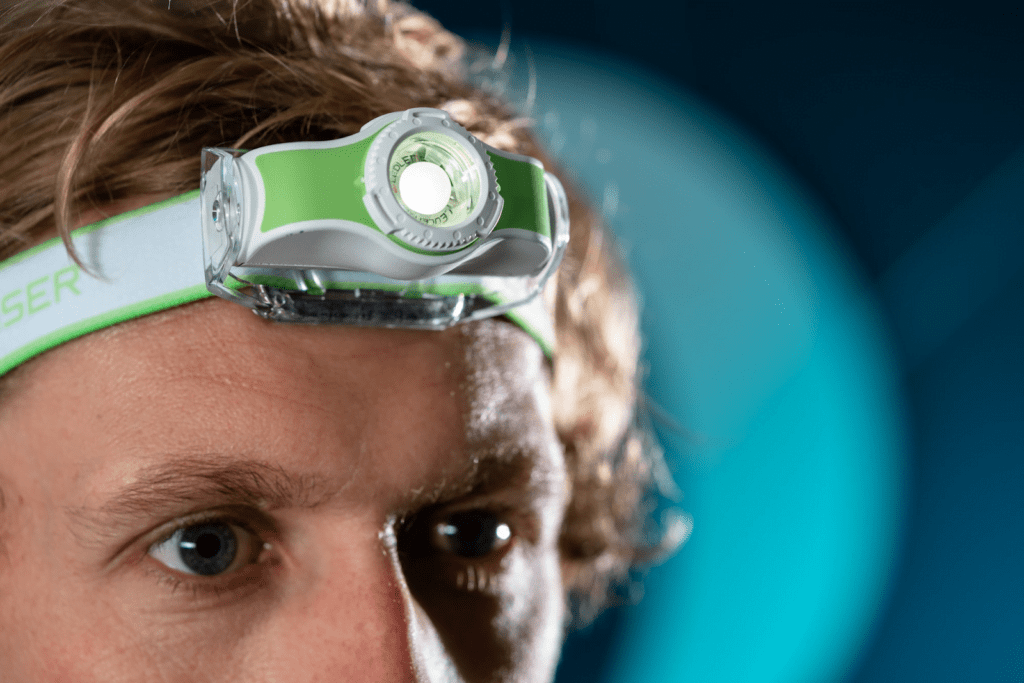From outdoor pursuits like hiking and camping to work in the construction or mechanics industries, headlamps have evolved into essential instruments for a variety of activities. To ensure they continue to be dependable and useful, however, they must be properly maintained and cared for, just like any other tool.
Terms like LED Lenser and headlamp relate to various features of a lighting apparatus. A definition of each phrase is provided below:
Headlamp:
A lamp for the head is a specific type of portable light fixture that can be placed on the top of the head and is frequently connected to the head of the user using an elastic band. For a variety of uses, it was created to provide autonomous lighting. Incandescent, halogen, and LED bulbs are just a few of the many illuminating technology or resources that can be employed in headlamp. The following are a headlamp’s major characteristics:
Wearable: People can employ the hand for various tasks since this device is made to be able to wear on your scalp.
Versatile: Headlamps can be applied for an extensive variety of actions, notably trekking, running, outdoor activities, and performing other tasks in conditions with little light.
Adjustable beam: Many headlights allow users to change the angle or focus of the light beam to meet their needs.
Power source: They can be powered by a variety of materials, including reusable or rechargeable batteries.
LED Lenser:
“LED Lenser” is a name for a line of premium LED headlamps and flashlights. The excellent LED technology and fine engineering used by LED Lenser are well renowned. Typical characteristics of led lenser products are:
Modern LED technology: LED Lenser devices use excellent LEDs (Light Emitting Diodes) to produce brilliant, effective illumination.
Optical lenses: These flashlights and headlamps frequently include precisely crafted lenses included in the construction, which focus and mold the light beam for optimum performance.
Wide-ranging product line: LED Lenser provides a variety of lighting items, such as headlamps, handheld flashlights, and other specialized lighting instruments.
Durability and construction: LED Lenser products are renowned for their sturdiness and premium building.
“Headlamp” is an umbrella term for a hands-free lighting device worn on the head, while “LED Lenser” designates a specific brand that creates premium LED-based illumination products, such as headlamps and flashlights. You would be contrasting a particular product (the LED Lenser headlamp) with a larger category (the headlamp) when comparing the two. The LED Lenser headlamp would probably have the qualities and features that are associated with the LED Lenser brand, like cutting-edge LED technology and precise engineering.
Illuminating the path: Headlamp maintenance tips
Observation and cleaning
Regular examination and cleaning are the initial steps in headlight maintenance. The brightness and efficiency of the headlight might be decreased when debris, moisture, and dust build up on the lens. Observe these methods to clean your headlamp:
Remove the batteries: To safeguard against unintended stimulation, constantly disconnect the rechargeable batteries as well as completely away an electrical source before cleansing.
Using a soft, lint-free cloth to clean the lens and headlight housing: When cleaning the optics and headlights housing, employ a soft, lint-free handkerchief. Stay away from scratchy items in order to avoid destroying the optics.
Inspect for damage: During cleaning, look for any signs of deterioration, such as corrosion in the battery compartment or lens cracks. Address any problems you see as soon as you can.
Battery care
Your headlamp’s batteries are its vital organs. Maintaining the functionality and longevity of the light requires proper battery care:
Battery removal: If your headlamp won’t be in operation for an extended period of time, replace the lithium-ion batteries in order to protect potential deterioration.
Use top-notch batteries: Buy batteries of outstanding quality in lieu of merging various manufacturers or varieties. Look closely at the company’s instructions concerning the battery’s capacity and quality.
Replace as necessary: If you notice a drop in brightness, replace the batteries immediately away. Weak batteries are frequently indicated by dimming illumination.
Seal and water resistance
The fact that a lot of headlamps are water-resistant but not waterproof is just a design feature. The ratings and specifications provided by the manufacturer should be carefully read. In order to keep your water resistance:
Check seals: Seals should be routinely inspected for wear or damage. If necessary, replacing them with a fresh set to provide a seal that is watertight.
Cleaning gaskets: It’s imperative for cleaning gaskets for getting rid of any dirt or debris that can compromise their effectiveness.

Strap and adjustment
The head strap is crucial to a headlamp’s ability to remain tight and snugly fitted.
Strap adjustment: Make the straps comfortable for your head size. Make sure the head strap is fitted correctly. The headlamp could slip or bounce due to a slack strap.
Elasticity inspection: Examine the strap’s material’s elasticity. Elastic straps may stop being as flexible over time. Think about replacing the strap if it is damaged.
Storage and transportation
Your headlamp’s life can be increased by using it properly and storing it and moving it around:
Keep your headlamp in a cold, dry place: In order to prevent degradation and condensation while your headlamp isn’t within use, preserve it in an unheated, dry environment at all occasions.
Protect the lens: Consider putting a cover or case to the headlight to shield the lens from nicks and collisions.
The maintenance of your headlamp is a straightforward yet essential part of making sure it continues to be a trustworthy tool for when you need it most. Your headlamp’s performance can be preserved and its lifespan increased by routine cleaning, correct battery care, attention to seals, strap adjustments, and careful storage. If you keep your lantern in good working order, whether you’re out in nature exploring or tackling a difficult task in the dark, you can light your way with assurance.
